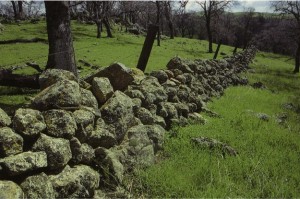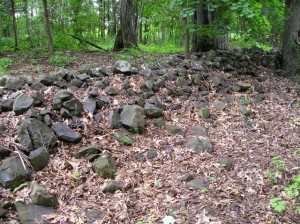
The top image is from the Sierra Nevada, sent to me as a postcard by a colleague, the late archaeologist Dena Dincauze. The bottom image is from UCONN Forest near Storrs CT, where I have been taking my students for years. The superficial resemblance between the two is because the three main factors giving rise to wall appearance — lithology, glacial action, agroecology– were similar. In both cases, stone composed of granite and milled into shape in the glacial basal shear zone were exposed after livestock grazing and moved aside to create the base of an expedient fence. Biologists call this convergent evolution when referring to the anatomical similarity of forms in unrelated taxonomic clades.

Below is a gallery, of of New England images gathered to show the range of rock composition and stonework that leads to such radically different outcomes. However, no matter where they are located, walls assume a common form when the three main factors of bedrock lithology, glacial handling, and cultural action are similar. In the process of reading the walls, they become clues to landscape history.






